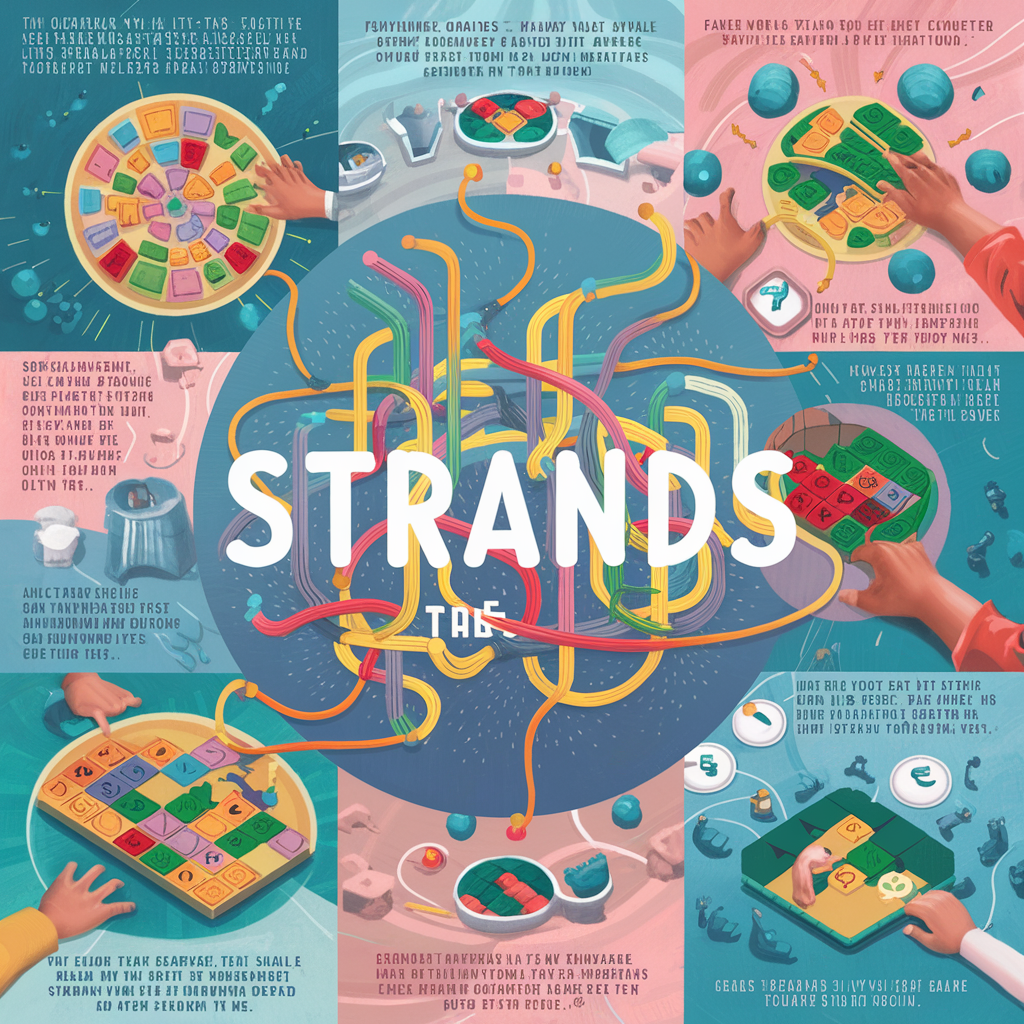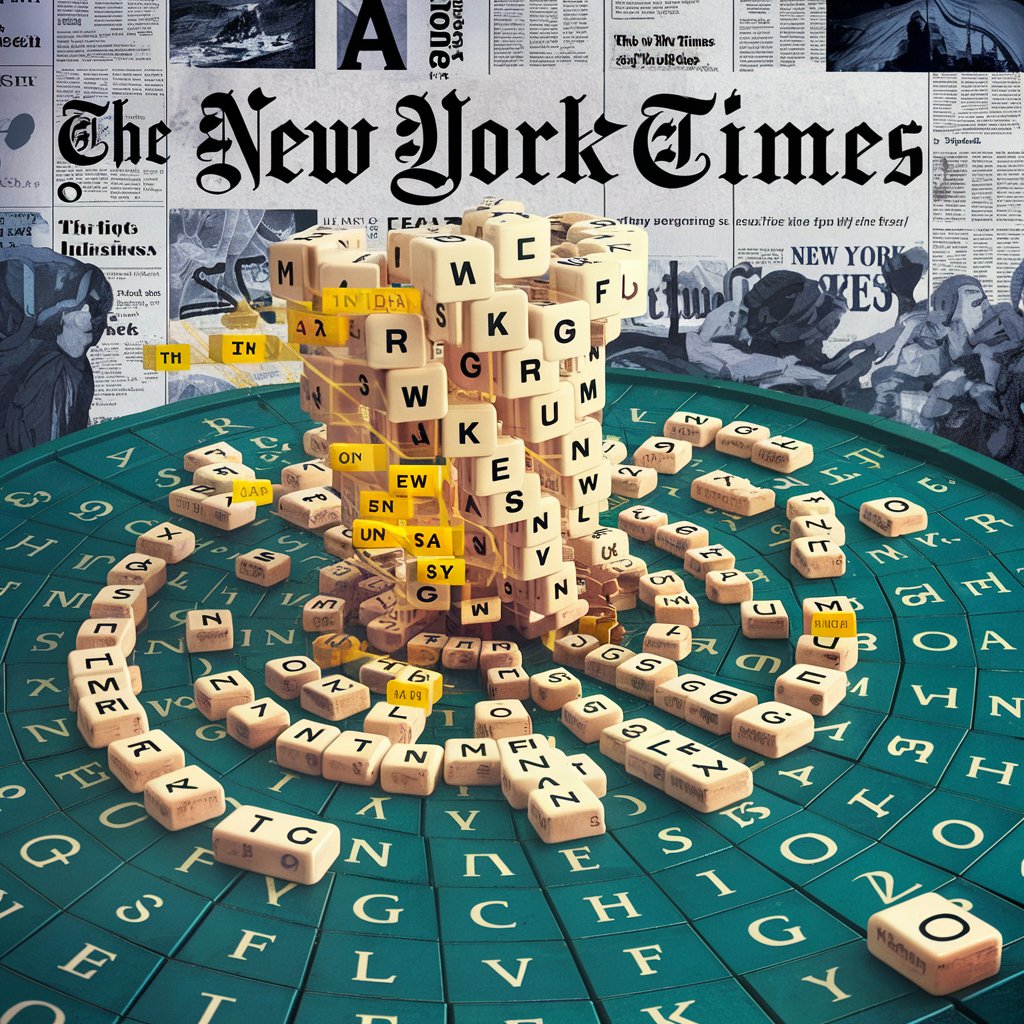The Strands NYT, created by the New York Times, has become a beloved pastime for word puzzle enthusiasts. Launched as a daily challenge, Strands engages players in forming words from a given set of letters. Its appeal lies in the simplicity of its concept and the complexity of its execution.
Each day, players are presented with a new puzzle, challenging them to find as many words as possible. The puzzle emphasizes the elusive “Spangram” – a word that uses all the provided letters.

Sandra Janowski, a prominent figure in puzzle creation, has significantly contributed to the development of Strands. Her expertise and innovative approach have helped shape the game into a favorite among puzzle enthusiasts.
Janowski’s influence extends beyond Strands. She has been involved in various other projects that test and expand the boundaries of word games. This article will explore the game’s rules, tips for success, and frequently asked questions to provide a comprehensive guide to mastering Strands.
History and Background of Strands NYT
The New York Times has a rich history of offering engaging and intellectually stimulating puzzles to its audience. Over the years, the newspaper has expanded its puzzle offerings beyond traditional crossword puzzles, embracing various word games catering to different interests and skill levels. Among these innovative games is “Strands,” a daily word puzzle that has quickly gained popularity among word enthusiasts.
Origins of New York Times Word Games
The New York Times’ journey into the world of word puzzles began in 1942 with the introduction of its first crossword puzzle. Since then, the newspaper has become a staple in the world of puzzles, known for its challenging and meticulously crafted offerings. The success of the crossword puzzle laid the foundation for the development of other word-based games, including the widely popular Spelling Bee and Wordle.
In line with its innovation and audience engagement tradition, the New York Times continued exploring new formats and ideas for word games. This quest led to the creation of Strands, a game designed to challenge players’ vocabulary and word-finding abilities uniquely and engagingly.
Development and Launch of Strands
Strands were developed by a team of skilled puzzle creators, including Sandra Janowski, a renowned figure in the puzzle community. Janowski’s involvement brought a wealth of experience and creativity to the project. Known for her work on other famous puzzles, she was pivotal in shaping Strands into a distinctive and captivating game.

Strands was officially launched as part of the New York Times’ digital offerings. The game was introduced as a daily word puzzle, accessible through the newspaper’s website and mobile app. It quickly garnered a loyal following, attracting players who enjoyed the challenge of finding words from a limited set of letters. The game’s format, which involves discovering as many words as possible using the given letters, was a fresh take on traditional word puzzles, offering a blend of simplicity and complexity that appealed to a wide range of players.
The Concept and Evolution of Strands
Strands revolves around forming words from a set of letters, with the added challenge of finding the “Spangram” – a word that uses all the letters provided. This unique twist sets Strands apart from other word games and adds an extra layer of difficulty and satisfaction. The daily release of new puzzles ensures that players always have fresh challenges to look forward to, making Strands an addictive and engaging experience.
Since its launch, Strands has continued to evolve, with new features and updates enhancing the player experience. The game has incorporated themes, adding a layer of complexity and creativity. Themes range from holidays and seasons to abstract concepts, giving players a hint about the types of words they might encounter. This thematic element makes the game more enjoyable and stimulates players’ thinking and vocabulary skills.
Reception and Impact
Strands has been well-received by players and critics alike. Its success can be attributed to its accessible yet challenging gameplay, the quality of its puzzles, and the New York Times’ reputation for producing high-quality content. The game’s daily format and the inclusion of features like hints and scoring have made it a favorite among both casual players and severe puzzle enthusiasts.
Strands’ impact extends beyond entertainment. The game has become a valuable tool for language learning and cognitive training. By encouraging players to explore different word combinations and think creatively, Strands helps improve vocabulary, spelling, and problem-solving skills. It also fosters community among players, who often share their scores and strategies on social media and online forums.
How To Play Strands?
Strands NYT is a game that tests your vocabulary and strategic thinking. The primary objective is to form as many words as possible from a given set of letters, each needing to meet specific criteria.

Here’s a Step-by-Step Guide on How to Play:
Objective
The main goal is to find all possible words from the provided set of letters. The words must be at least three letters long, and each letter can only be used as many times as it appears in the set.
Daily Puzzle
A new puzzle is released daily, offering a fresh set of letters. This ensures that the challenge remains novel and engaging, encouraging daily play.
Word Length
The minimum word length is three letters; no maximum limit exists, but longer words yield higher scores.
Particular Word – Spangram
Each puzzle has at least one word that uses all the letters provided, known as the Spangram. Finding the Spangram is crucial as it significantly boosts your score.
Scoring
Points are awarded based on the length and rarity of the words. Common words may yield fewer points, while longer or less familiar words can substantially boost your score.
What Is Today’s Strands Hint?
Hints are a valuable feature in Strands, especially for players stuck on a particularly challenging puzzle. Each day, players can access hints that provide subtle clues to help them uncover tricky words. These hints are designed to guide players without giving away the answers outright.
Players can access hints in the hints section within the game interface. The New York Times website and mobile app also offer hints for the day’s puzzle, making it easy to get assistance whether you’re playing on your computer or mobile device. Hints may include letters or partial words, offering a nudge in the right direction without spoiling the fun.
What Is the Strands Game by the New York Times?
Strands is a word puzzle game developed by the New York Times, known for its high-quality content and engaging games. Strands challenges players to find as many words as possible from a set of letters, with the ultimate goal of finding the Spangram. The game has quickly gained popularity among puzzle enthusiasts thanks to its unique blend of simplicity and depth.
Unlike other New York Times games like Spelling Bee and Crossword, Strands focuses on word formation and vocabulary. While Spelling Bee encourages players to find words using a central letter, and Crossword involves solving clues to fill in a grid, Strands offers a straightforward yet challenging experience. The emphasis on word discovery and the daily release of new puzzles make Strands appealing to those looking to sharpen their linguistic skills.
How to Play the NYT’s Strands Word Search Game
Playing Strands is both simple and addictive. Here’s a step-by-step guide to help you get started:
Access the Game
You can play Strands by visiting the New York Times website or using its mobile app. A subscription may be required to access the full game, which offers an ad-free experience and access to archived puzzles.
Daily Puzzle
A new set of letters is presented in a grid daily. The letters are displayed prominently, and players can start forming words immediately.
Form Words
To form a word, click on the letters or type them out. The game allows you to rearrange the letters as needed. Once you’ve formed a word, please submit it to check for validity.
Submit Words
After submitting a word, the game will display whether it is accepted and award points accordingly. If the word is invalid, players can try again with a different combination.
Find the Spangram
One of the primary challenges in Strands is finding the Spangram. This word uses all the given letters and is often the key to achieving a high score. Focus on this word, as it can significantly boost your overall score.
Review and Retry
After completing the puzzle, players can review their performance. The game often displays a list of words they missed, providing an opportunity to learn and improve in future puzzles.
Quick Tips to Succeed at Strands by the NYT
To excel at Strands, consider the following tips:
Start with Common Words
Find common words that are easy to identify. This approach helps you warm up and build momentum.
Look for Prefixes and Suffixes
Identifying common prefixes (e.g., “un-,” “re-“) and suffixes (e.g., “-ing,” “-ed”) can help you form words quickly.
Use All Letters
Focus on finding the Spangram early. Using all the letters in a single word can boost your score substantially.
Work Methodically
Systematically go through all possible letter combinations. This approach ensures you don’t miss any potential words.
Take Breaks
If you’re stuck, take a short break. Sometimes, stepping away from the puzzle can provide a fresh perspective and help you see new word possibilities.
Explanation of the Rules of Strands NYT Game
The rules of Strands are straightforward but require careful attention to detail:
Grid and Words
The game presents a grid of letters. Players must form words using these letters, adhering to the game’s rules.
Word Formation
Words must be at least three letters long. Each letter can only be used as often as it appears in the grid. Players can use the same letter in different words but not more than once in the same word unless it appears multiple times in the grid.
Spangram
A spangram is a word that uses all the letters in the grid. Finding it is a significant challenge and a primary goal for many players.
Completing the Puzzle
The puzzle is completed when all possible words are found, or the player is satisfied with their score. There’s no penalty for missing words, but finding more words results in a higher score.
Challenge Focus
Strands encourage players to find rare and longer words, offering more points. The game’s challenge lies in balancing discovering ordinary words with pursuing more challenging ones.
Themes and Theme Words in Strands
Strands often incorporate themes into their puzzles, adding an extra layer of interest. Themes can range from holidays and seasons to abstract concepts like emotions or colors. For example, a puzzle themed around “Winter” might include words like “snow,” “cold,” and “frost.”

Themes hint at the types of words players might find in the puzzle. Attention to the theme can help players think along certain lines and discover words they might otherwise overlook. However, not all words in a puzzle necessarily fit the theme, adding an element of surprise and challenge.
The Spangram In Strands
The Spangram is a central feature of Strands. It refers to a word that uses all the letters in the puzzle. Finding the Spangram is often challenging, requiring players to think creatively and consider less apparent words.
For example, if the provided letters are “B, L, A, E, R, T,” the Spangram could be “TABLE.” Discovering the Spangram is rewarding, significantly boosting the player’s score. It’s often the most sought-after word in the puzzle, and finding it can be a satisfying achievement.
Scoring System in Strands
Scoring in Strands is based on the length and rarity of the words found. The longer the word, the more points it generally earns. Additionally, words that are less commonly used or more difficult to find tend to be worth more points. The Spangram, a word that uses all the letters, offers a substantial score bonus.
Here’s a breakdown of the scoring system:
Common Words
Short, common words yield fewer points. For example, a three-letter word like “cat” might only give a few points.
Longer Words
Longer words offer more points. For instance, a seven-letter word like “stretch” can significantly increase a score.
Spangram
Finding the Spangram can double or even triple the player’s score, making it crucial to achieving a high score.
Rarity
Words that are less commonly known or used can boost scores. The game’s dictionary includes a wide range of words, from everyday terms to more obscure ones.
Read More: Is Tristan Tate Older Than Andrew? The Definitive Answer and Surprising Facts
Conclusion
In summary, “Strands” by the New York Times is a captivating word puzzle game that has quickly become a favorite among word enthusiasts. The game combines simplicity with depth, challenging players to discover as many words as possible from a given set of letters while aiming to find the elusive Spangram. With daily puzzles, thematic variations, and a focus on vocabulary and strategic thinking, Strands offers a refreshing and engaging experience. Whether you’re a casual player or a seasoned puzzle solver, Strands provides a daily dose of intellectual stimulation and fun.
The game’s development, spearheaded by puzzle experts like Sandra Janowski, ensures a high-quality experience that keeps players returning for more. As you navigate the world of Strands, use the tips and strategies this article shares to enhance your gameplay and maximize your scores. Enjoy the challenge, improve your vocabulary, and immerse yourself in the fascinating world of word puzzles.
Frequently Asked Questions
1. Can I play Strands NYT more than once a day?
No, Strands is designed as a daily puzzle game, with a new set of letters released daily. Players can attempt the daily puzzle once and work on finding as many words as possible. Once you’ve completed the puzzle for the day, you’ll need to wait until the next day for a new challenge.
2. Do I need a New York Times subscription to play Strands?
While you can access a limited version of Strand’s for free, a New York Times subscription is required to access the whole game experience, including additional features and archived puzzles. Subscribers enjoy an ad-free experience and can track their progress and scores over time.
3. Are there hints available if I get stuck on a puzzle?
Yes, hints are available in Strands to assist players stuck on a particular puzzle. These hints can provide subtle clues, such as letters or partial words, to help guide you toward the correct answers. You can access hints through the game interface on the New York Times website or mobile app.

Nicholas Clark is the innovative mind behind Insuranted.com, a website dedicated to providing clear, comprehensive, and reliable information on insurance. With a passion for simplifying complex topics, Nicholas aims to empower readers to make informed decisions about their insurance needs










